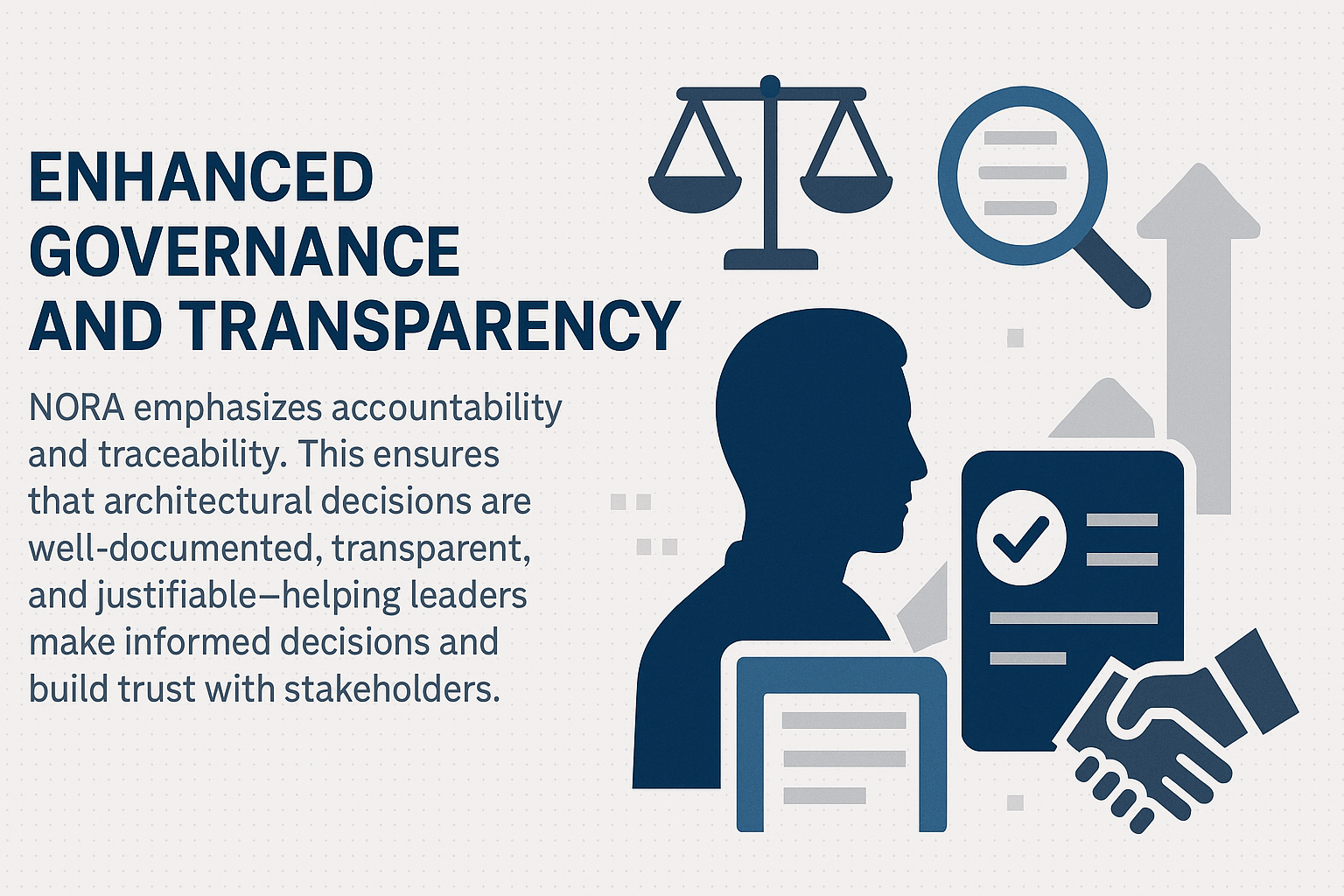Introduction
In today’s fast-changing digital landscape, governance and transparency have become essential pillars of organizational success. Without clear accountability, traceability, and openness in decision-making, entities risk inefficiency, duplication of work, and even loss of trust among stakeholders. The NORA (Nederlandse Overheid Referentie Architectuur) methodology provides a robust framework to ensure that architectural decisions are not only technically sound but also transparent and justifiable.
Why Governance and Transparency Matter
Good governance in enterprise architecture ensures that IT decisions are aligned with organizational strategy, resources are allocated effectively, and compliance requirements are met. Transparency complements this by making architectural decisions visible, understandable, and traceable—so all stakeholders know why certain choices were made.
When governance and transparency are weak, organizations face challenges such as:
- Misaligned projects that waste money and resources.
- Lack of accountability when systems fail.
- Poor communication between IT teams and leadership.
- Difficulty in meeting regulatory or audit requirements.
How NORA Strengthens Governance and Transparency
1. Accountability in Decision-Making
NORA ensures that every architectural decision has a responsible owner and is tied back to clear principles. This helps prevent confusion and promotes accountability across teams.
2. Traceability of Actions
With NORA, organizations can track decisions across the lifecycle of projects. Each change or improvement in the IT landscape is documented, making it easier to audit, review, and justify choices.
3. Documentation and Standardization
By providing templates, models, and guidelines, NORA creates a standardized way to record architecture principles and practices. This ensures that everyone works with the same information and can revisit decisions when needed.
4. Building Trust with Stakeholders
Transparency fosters trust. When leadership, teams, and external partners see that decisions are made following clear principles and traceable processes, it builds confidence in the organization’s governance framework.
Benefits for Organizations
- Regulatory Compliance: Easier to meet legal and audit requirements.
- Better Collaboration: Teams communicate effectively with clear documentation.
- Stronger Stakeholder Confidence: Leaders, employees, and citizens trust the process.
- Reduced Risks: Less chance of hidden mistakes or misaligned strategies.
Conclusion
Enhanced governance and transparency are not optional—they are essential to long-term success in digital transformation. By adopting the NORA methodology, organizations establish clear accountability, strengthen decision-making, and build trust with stakeholders. This makes enterprise architecture not just a technical function but a strategic enabler for sustainable growth.

